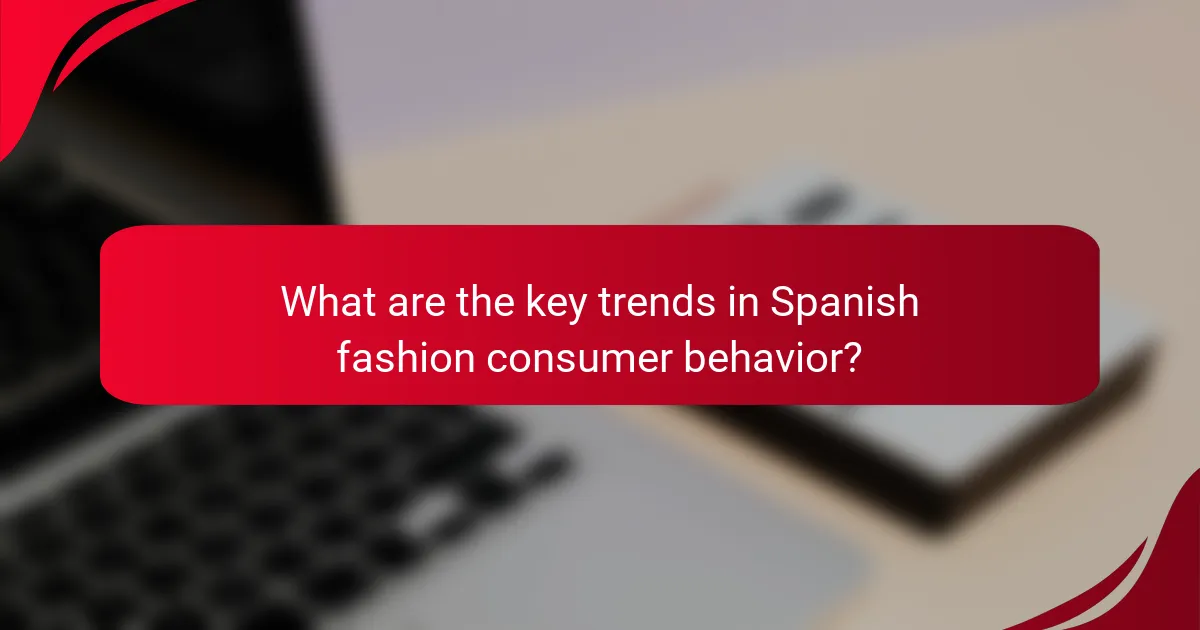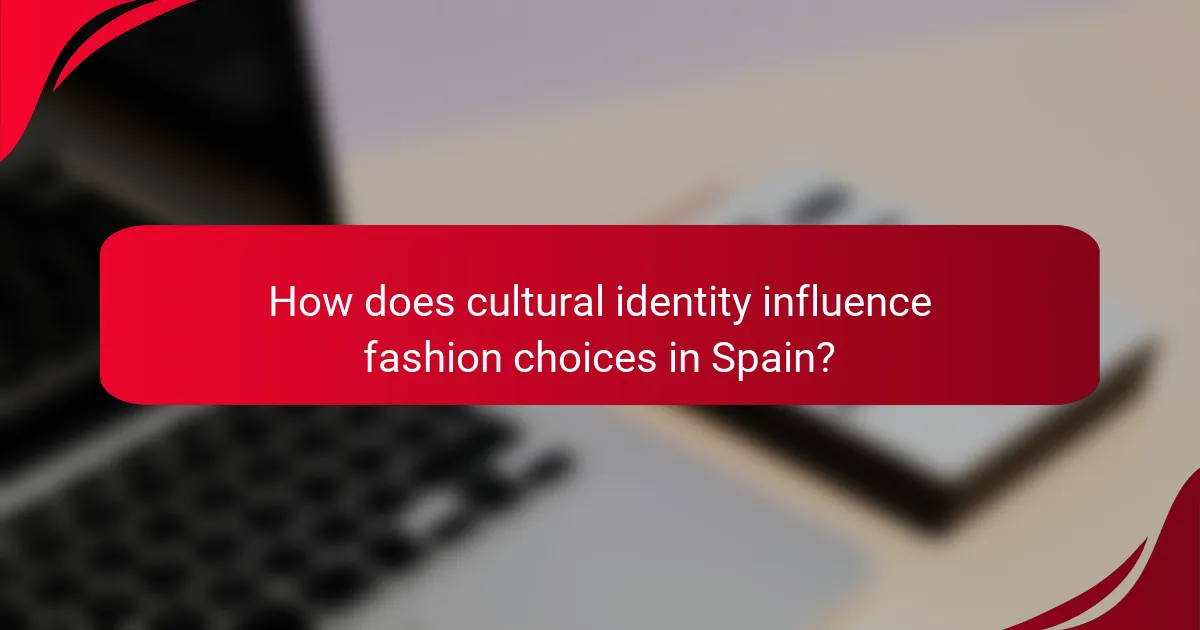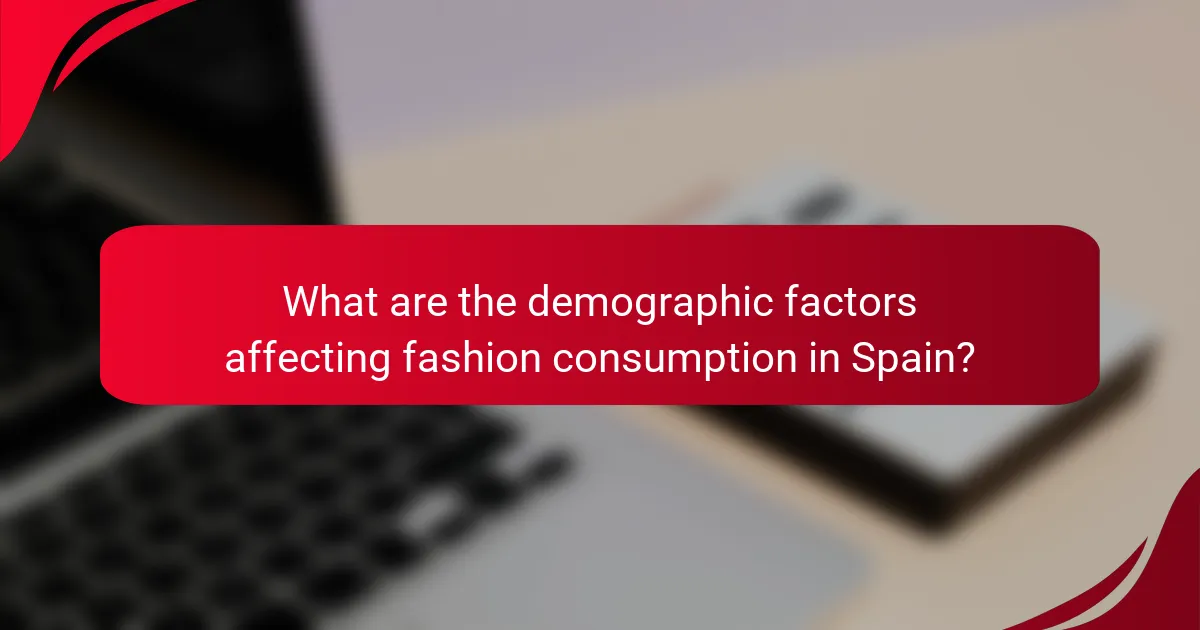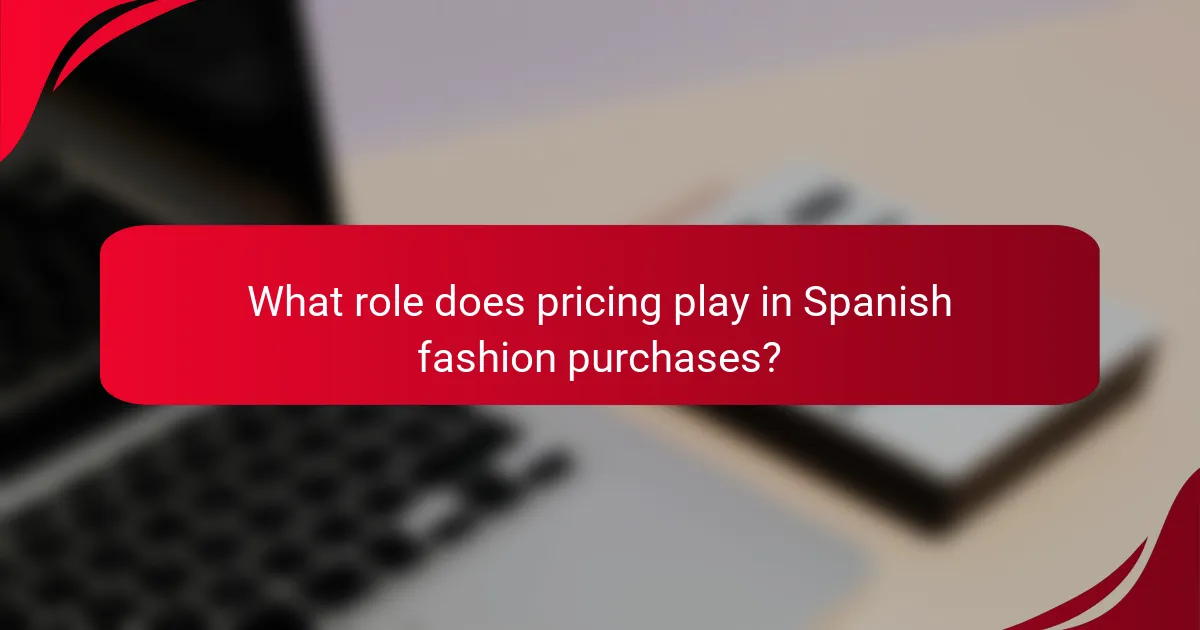Understanding Spanish consumer behavior in fashion marketing requires an appreciation of their cultural identity and values, which significantly shape purchasing decisions. With a growing emphasis on sustainability and the influence of digital shopping platforms, brands must adapt to these trends to effectively engage with this diverse market. Recognizing the regional traditions and social values that inform fashion choices is essential for connecting with Spanish consumers.

How do Spanish consumers approach fashion marketing?
Spanish consumers tend to favor brands that resonate with their cultural identity and values, significantly influencing their purchasing decisions. Understanding their approach to fashion marketing involves recognizing their preferences for local brands, the impact of social media, and the growing importance of sustainability.
Preference for local brands
Spanish consumers often show a strong preference for local fashion brands, valuing authenticity and cultural relevance. Brands like Zara and Mango exemplify this trend, as they not only represent Spanish fashion but also reflect local styles and tastes.
When marketing to this demographic, emphasizing local heritage and craftsmanship can enhance brand appeal. Collaborations with local designers or community initiatives can further strengthen connections with consumers.
Influence of social media
Social media plays a crucial role in shaping Spanish consumers’ fashion choices, with platforms like Instagram and TikTok being particularly influential. Many consumers rely on social media for style inspiration, following influencers and brands that align with their personal aesthetics.
Brands should engage actively on these platforms, utilizing visually appealing content and influencer partnerships to reach their target audience. User-generated content can also enhance credibility and foster community among consumers.
Importance of sustainability
Sustainability has become a significant factor in the purchasing decisions of Spanish consumers, who are increasingly aware of environmental issues. Many prefer brands that demonstrate a commitment to eco-friendly practices, such as using sustainable materials and ethical production methods.
Fashion marketers should highlight their sustainability initiatives, such as recycling programs or carbon-neutral shipping options. Transparency in sourcing and production can build trust and loyalty among environmentally conscious consumers.

What are the key trends in Spanish fashion consumer behavior?
Spanish fashion consumers are increasingly influenced by digital shopping platforms and a growing emphasis on sustainability. Understanding these trends is crucial for brands aiming to connect with this market effectively.
Rise of online shopping
The shift towards online shopping in Spain has accelerated, particularly following recent global events. Consumers now prefer the convenience of browsing and purchasing fashion items from home, often using mobile devices.
Brands must optimize their online presence, ensuring user-friendly websites and engaging social media channels. Offering features like virtual try-ons and personalized recommendations can enhance the shopping experience.
Shift towards ethical consumption
Spanish consumers are increasingly prioritizing ethical considerations in their purchasing decisions. This trend includes a preference for brands that demonstrate transparency in sourcing materials and fair labor practices.
To appeal to this demographic, fashion brands should highlight their sustainability efforts, such as using organic materials or implementing recycling programs. Engaging storytelling about the brand’s ethical journey can resonate with consumers looking to make responsible choices.

How does cultural identity influence fashion choices in Spain?
Cultural identity plays a significant role in shaping fashion choices in Spain, as it reflects regional traditions, historical influences, and social values. Consumers often select clothing that resonates with their cultural background, leading to diverse styles across the country.
Regional styles and traditions
Spain is known for its rich tapestry of regional styles, each influenced by local customs and historical contexts. For example, traditional garments like the flamenco dress in Andalusia or the Basque beret highlight the unique cultural heritage of these areas. Consumers often gravitate towards clothing that showcases their regional identity, especially during festivals and local events.
Fashion brands that recognize and incorporate regional styles into their collections can better connect with consumers. Offering items that reflect local traditions not only appeals to cultural pride but also encourages loyalty among customers who value authenticity.
Impact of Spanish celebrities
Spanish celebrities significantly influence fashion choices through their public appearances and endorsements. Icons such as Penélope Cruz and Rosalía often set trends that resonate with the public, making their styles highly sought after. Consumers are likely to emulate the fashion choices of these figures, leading to increased demand for similar clothing and accessories.
Brands can leverage this influence by collaborating with popular figures to create exclusive lines or promote their products. However, it is essential to ensure that these collaborations align with the brand’s identity and values to maintain authenticity and consumer trust.

What marketing strategies resonate with Spanish consumers?
Spanish consumers respond well to marketing strategies that emphasize local culture and community engagement. Tailoring campaigns to reflect regional preferences and values can significantly enhance brand loyalty and consumer trust.
Localized advertising campaigns
Localized advertising campaigns are crucial for connecting with Spanish consumers. These campaigns should incorporate regional dialects, cultural references, and local events to resonate with the target audience. For example, using imagery from popular Spanish festivals can create a sense of familiarity and relevance.
Brands should consider regional variations in Spain, as preferences can differ significantly between areas like Catalonia and Andalusia. This means adapting messaging and visuals to align with local tastes, which can lead to more effective engagement.
Collaborations with influencers
Collaborating with influencers is an effective strategy for reaching Spanish consumers, as they often trust recommendations from familiar faces. Brands should partner with influencers who have a genuine connection to their audience and align with the brand’s values. This authenticity can drive higher engagement and conversion rates.
When selecting influencers, consider their follower demographics and engagement metrics to ensure they match your target market. Micro-influencers, who typically have smaller but more engaged audiences, can be particularly effective in niche markets within Spain.

What are the demographic factors affecting fashion consumption in Spain?
Demographic factors such as age and income level significantly influence fashion consumption patterns in Spain. Understanding these elements can help marketers tailor their strategies to meet the preferences and purchasing power of different consumer segments.
Age group preferences
Age plays a crucial role in shaping fashion preferences among Spanish consumers. Younger demographics, particularly those aged 18-30, tend to favor trendy, fast-fashion items that reflect current styles and social media influences. In contrast, older consumers often prioritize quality and timeless pieces over fleeting trends.
For example, millennials may gravitate towards brands that emphasize sustainability and ethical production, while those in their 40s and 50s might prefer established brands known for durability. Marketers should consider these distinctions when designing campaigns aimed at specific age groups.
Income level impact
Income level significantly impacts fashion consumption in Spain, affecting both brand choice and spending habits. Higher-income consumers are more likely to invest in luxury brands and designer pieces, while middle and lower-income groups often seek affordable options that offer good value for money.
Additionally, economic fluctuations can alter consumer behavior. During economic downturns, even affluent shoppers may become more price-conscious, leading to increased interest in sales and discounts. Marketers should adjust their messaging and product offerings based on the prevailing economic climate to effectively reach their target audience.

How do Spanish consumers respond to fashion advertising?
Spanish consumers typically respond positively to fashion advertising that resonates with their cultural values and lifestyle preferences. They favor brands that showcase authenticity and align with their personal identity, often influenced by social media and peer recommendations.
Engagement with digital content
Spanish consumers are highly engaged with digital content, particularly through social media platforms like Instagram and TikTok. Brands that utilize interactive features, such as polls or live videos, can significantly boost engagement rates, often leading to increased brand loyalty.
To effectively capture attention, fashion marketers should focus on creating visually appealing and relatable content. Short videos and user-generated content are particularly effective in this market, as they encourage sharing and community participation.
Effectiveness of visual storytelling
Visual storytelling is crucial in fashion marketing, as Spanish consumers are drawn to narratives that evoke emotions and connect with their experiences. Brands that tell compelling stories through imagery and video can enhance consumer interest and drive purchasing decisions.
Using local influencers to narrate these stories can further enhance authenticity. Highlighting cultural elements or seasonal trends in visual campaigns can resonate well, making the advertising feel more relevant and personalized to the Spanish audience.

What role does pricing play in Spanish fashion purchases?
Pricing is a crucial factor influencing fashion purchases in Spain, as consumers often weigh cost against quality and brand reputation. Understanding how pricing impacts buying decisions can help marketers tailor their strategies effectively.
Price sensitivity among consumers
Spanish consumers exhibit varying levels of price sensitivity, often influenced by economic conditions and personal financial situations. During economic downturns, consumers may prioritize affordability, seeking discounts or opting for lower-priced alternatives.
Brands can address this sensitivity by offering promotional sales or loyalty programs that provide value without compromising quality. For instance, seasonal sales can attract price-conscious shoppers while maintaining brand prestige.
Perceived value vs. cost
In Spain, perceived value often outweighs the actual cost of fashion items. Consumers are willing to pay more for brands that convey quality, sustainability, or unique design. This perception can lead to a willingness to invest in higher-priced items if they believe the value justifies the expense.
Marketers should focus on communicating the unique benefits of their products, such as craftsmanship or ethical sourcing, to enhance perceived value. Highlighting testimonials or endorsements can also strengthen consumer confidence in the price they are paying.










